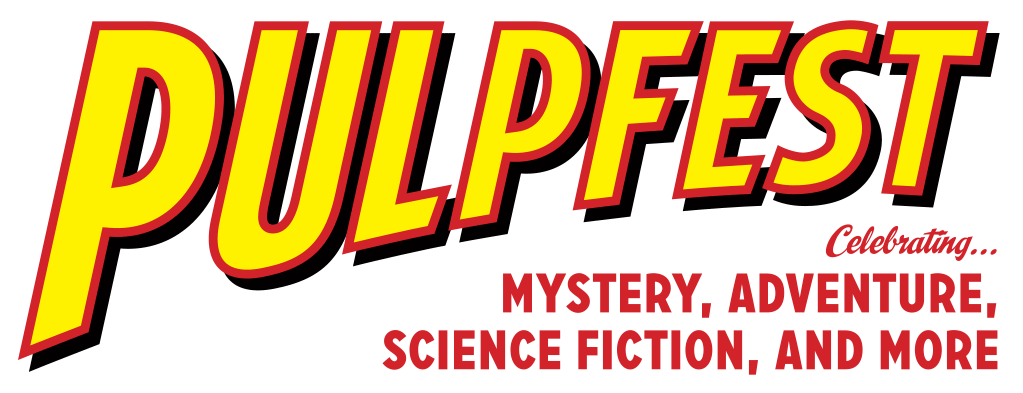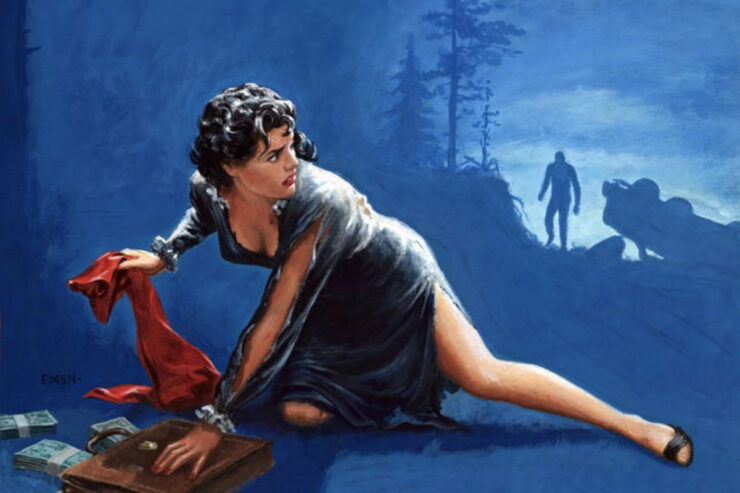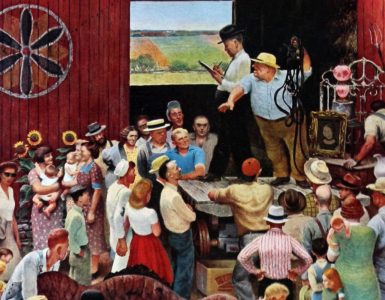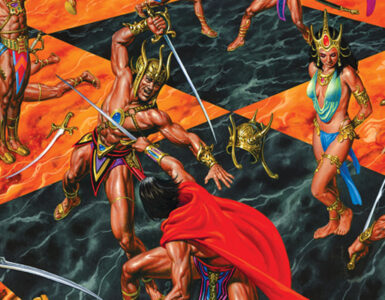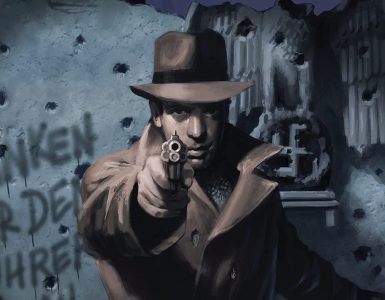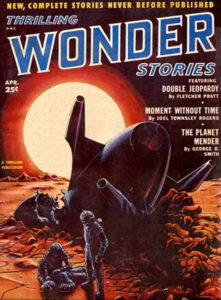 Known primarily for his work composed for the digest and paperback markets, Edmund Alexander Emshwiller was born 100 years ago on February 16, 1925.
Known primarily for his work composed for the digest and paperback markets, Edmund Alexander Emshwiller was born 100 years ago on February 16, 1925.
After serving with the US Infantry during World War II, Emshwiller studied art at the University of Michigan in Ann Arbor. There he met art student and future writer Carol Fries. The couple married in 1949 and set off for Europe and further art studies.
After returning to the United States, Ed began contributing interior art and cover paintings to the science fiction digests and remaining pulp magazines. His first published works were several interior illustrations for the May 1951 issue of H. L. Gold’s Galaxy Science Fiction, illustrating stories by Isaac Asimov, Cyril Judd, and Damon Knight. The next month, he contributed more interiors and the first of many cover paintings for Gold’s classic digest.
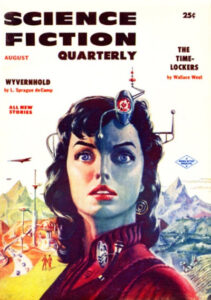 Emshwiller’s first pulp cover — pictured above — was painted for the April 1952 issue of Standard’s Thrilling Wonder Stories. Although most of his pulp illustrations were interiors, he also contributed cover art to Fantastic Story Magazine, Science Fiction Quarterly, Space Stories, Startling Stories, and Wonder Story Annual, the digest versions of Amazing Stories, Astounding Science Fiction, and Future Science Fiction, and many other digests, including Ellery Queen’s Mystery Magazine, Fantastic Universe, If, Infinity Science Fiction, The Magazine of Fantasy and Science Fiction, Rocket Stories, Satellite Science Fiction, Science Fiction Stories, Super-Science Fiction, and Venture Science Fiction Magazine.
Emshwiller’s first pulp cover — pictured above — was painted for the April 1952 issue of Standard’s Thrilling Wonder Stories. Although most of his pulp illustrations were interiors, he also contributed cover art to Fantastic Story Magazine, Science Fiction Quarterly, Space Stories, Startling Stories, and Wonder Story Annual, the digest versions of Amazing Stories, Astounding Science Fiction, and Future Science Fiction, and many other digests, including Ellery Queen’s Mystery Magazine, Fantastic Universe, If, Infinity Science Fiction, The Magazine of Fantasy and Science Fiction, Rocket Stories, Satellite Science Fiction, Science Fiction Stories, Super-Science Fiction, and Venture Science Fiction Magazine.
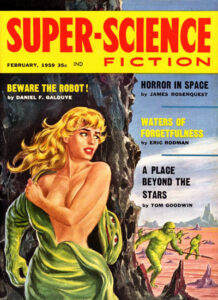 Often signing his work as “Emsh,” or occasionally Ed Alexander, Ed Emsler, or Willer — Emshwiller also painted hundreds of covers for paperback and hardcover book publishers, including Ace, Avalon, Ballantine, Gnome Press, Gold Medal, Lancer, and Pyramid. He also contributed interior illustrations and cover paintings to the growing men’s adventure magazine market.
Often signing his work as “Emsh,” or occasionally Ed Alexander, Ed Emsler, or Willer — Emshwiller also painted hundreds of covers for paperback and hardcover book publishers, including Ace, Avalon, Ballantine, Gnome Press, Gold Medal, Lancer, and Pyramid. He also contributed interior illustrations and cover paintings to the growing men’s adventure magazine market.
During the early 1960s, Emshwiller began creating experimental and documentary films. He became increasingly active in the New American Cinema movement. According to The Encyclopedia of Science Fiction, his 1966 film, Relativity, “is regarded by many critics as one of the greatest short films ever made.” He turned to full-time moviemaking in 1964 and curtailed much of his illustration work. Moving to California, he became the dean of the School of Film and Video at the California Institute of Arts until his death in 1990.
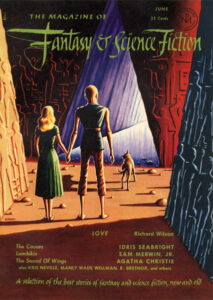 The winner of five Hugo Awards as best artist, Ed Emshwiller seemed able to fit his style to whatever book or magazine he was illustrating. Along with artists such as Frank Kelly Freas and Roy G. Krenkel, he helped the pop culture market move away from the wild and wooly style of the early pulps to the more sophisticated and mature visions required to illustrate modern genre fiction.
The winner of five Hugo Awards as best artist, Ed Emshwiller seemed able to fit his style to whatever book or magazine he was illustrating. Along with artists such as Frank Kelly Freas and Roy G. Krenkel, he helped the pop culture market move away from the wild and wooly style of the early pulps to the more sophisticated and mature visions required to illustrate modern genre fiction.
A talented and extremely prolific artist, Edmund Alexander Emshwiller helped move his craft into the future. Happy century, Emsh.
Our featured image is excerpted from Ed Emshwiller’s cover art for the November 1955 number of Mercury Mystery Book, illustrating Gil Brewer’s novella, “Red Scarf.”
The remaining images — all painted by Ed Emshwiller — are the April 1952 Thrilling Wonder Stories, the August 1956 Science Fiction Quarterly, the February 1959 Super-Science Fiction, and the June 1952 issue of The Magazine of Fantasy and Science Fiction.
A fan of horror and fantasy fiction, Jeanne Harding attended her first PulpFest in 2023, helping to celebrate the centennial of Weird Tales. You can read more of Jeanne’s contributions to pulpfest.com — including her look at the shudder pulps — by clicking here.
